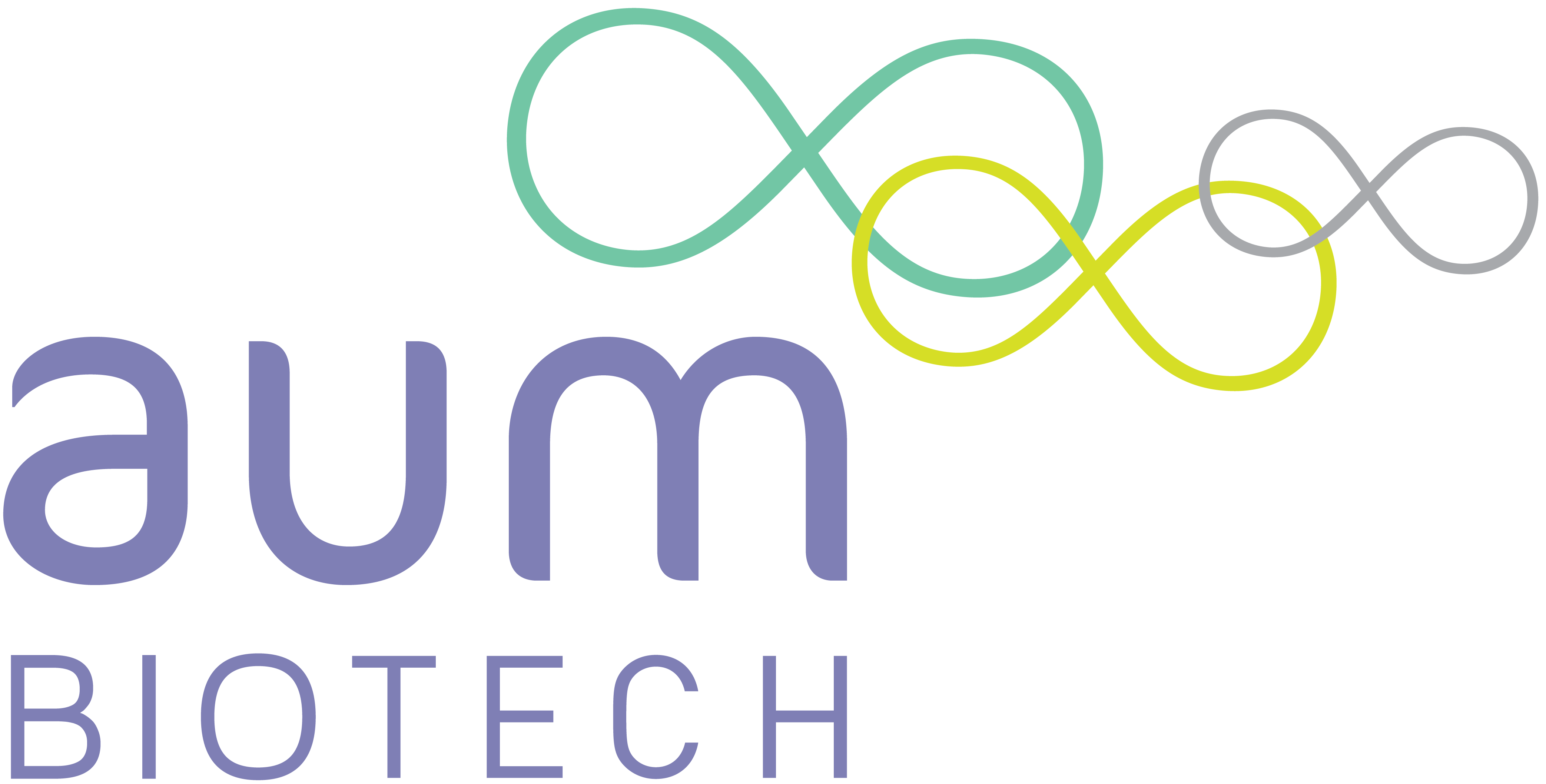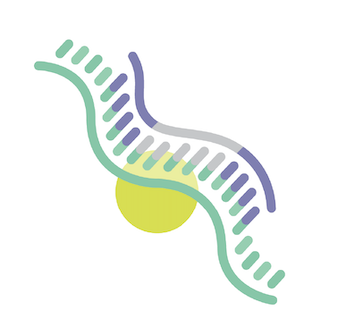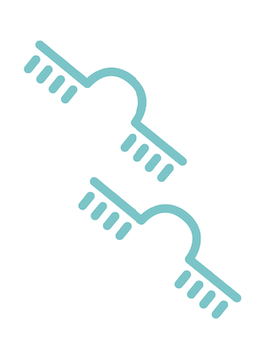AUMsiRNA™
Enhanced siRNA for Potent mRNA Knockdown
AUMsiRNA™
Industry-Standard RNAi with Enhanced Performance
AUMsiRNA™ represents our chemically enhanced small interfering RNA molecules designed for researchers who prefer the familiar RNAi pathway for gene silencing. Built with proprietary chemical modifications, these 21-23 nucleotide duplexes offer superior stability, potency, and specificity compared to unmodified siRNAs.
Unlike our self-delivering ASO products, AUMsiRNA operates through the well-characterized RNA interference (RNAi) mechanism, utilizing the cellular RISC (RNA-Induced Silencing Complex) machinery. This makes it an ideal choice for researchers already comfortable with siRNA workflows who want enhanced performance without changing their experimental approach.
Our enhanced siRNAs incorporate strategic chemical modifications that improve nuclease resistance, reduce immune activation, and enhance guide strand selection – all while maintaining compatibility with standard transfection protocols you already use in your lab.
Note: Performance characteristics are sequence and cell-type dependent. Results may vary based on target gene, experimental conditions, and delivery method. We recommend testing multiple siRNA sequences per target and including appropriate controls.
Familiar Technology, Enhanced Performance
AUMsiRNA leverages the proven RNAi pathway that researchers have used for decades. If your lab has established siRNA protocols, you can seamlessly integrate AUMsiRNA without changing workflows. Our enhancements provide improved stability compared to unmodified siRNA in serum-containing media and prolonged knockdown duration (up to 7-10 days), while maintaining the predictable kinetics of RNAi-mediated silencing.
Superior Potency & Duration
Strategic chemical modifications enhance RISC loading efficiency and improve thermodynamic asymmetry for optimal guide strand selection. This results in EC50 values in the low picomolar to low nanomolar range depending on target and cell type. The enhanced stability means sustained target suppression with a single transfection, reducing the need for repeated dosing and improving experimental consistency.
Minimized Off-Target Effects
Advanced chemical modifications significantly reduce seed-region mediated off-targeting (up to 90% reduction in optimized designs) compared to standard siRNAs. The enhanced chemical design minimizes miRNA-like effects while maintaining full on-target activity. Additionally, strategic 2'-modifications at key positions prevent passenger strand activity, ensuring cleaner, more specific knockdown.
Reduced Immune Activation
Chemical modifications are strategically placed to avoid TLR activation and minimize interferon responses. This is particularly important for primary cells and in vivo applications where immune activation can confound results. Our siRNAs show minimal cytokine induction even at high concentrations, allowing for cleaner phenotypic readouts.
RNA Interference Mechanism of Action
siRNA Delivery & Cellular Entry
AUMsiRNA duplexes are delivered into cells using standard transfection methods. The chemically modified siRNA escapes endosomes and enters the cytoplasm where it encounters the RNAi machinery.
RISC Loading & Activation
The siRNA duplex is recognized by RISC-loading complex proteins including Dicer and TRBP. Argonaute 2 (Ago2) cleaves the passenger strand, retaining only the guide strand. Our modifications ensure typically 85-95% correct strand selection.
Target Recognition & Cleavage
The activated RISC complex uses the guide strand to scan cellular mRNAs. Upon finding a complementary target, Ago2 cleaves the mRNA between nucleotides 10-11 of the guide strand, leading to mRNA degradation.
Catalytic Turnover
After mRNA cleavage, RISC releases the cleaved fragments and remains active to find additional target mRNAs. One siRNA-programmed RISC can cleave multiple mRNA copies, amplifying the silencing effect.
RNAi vs. ASO
| AUMsiRNA (RNAi) | AUMsilence (ASO) | |
|---|---|---|
| Molecule Type | Double-stranded RNA | Single-stranded DNA/RNA |
| Mechanism | RISC/Argonaute | RNase H |
| Cellular Location | Primarily cytoplasmic | Nuclear & cytoplasmic |
| Delivery Required | Yes (transfection) | No (self-delivering) |
Applications and Use Cases
Target Validation Studies
Rapidly validate drug targets by achieving potent knockdown in disease-relevant cell models. AUMsiRNA's enhanced stability allows for extended phenotypic analysis without repeated transfections, ideal for time-course studies of protein depletion and recovery.
Pathway Analysis
Dissect complex signaling pathways by selectively silencing pathway components. The high specificity of AUMsiRNA ensures clean results when studying gene networks, with minimal perturbation of related pathways due to reduced off-target effects.
Drug Development
Use AUMsiRNA as a research tool to mimic therapeutic gene silencing. The enhanced chemical modifications provide insights into achievable knockdown levels and duration that closely model therapeutic siRNA drugs in development.
High-Content Screening
Deploy in automated screening platforms for systematic gene function analysis. The consistent performance and reduced batch-to-batch variability of AUMsiRNA make it ideal for large-scale phenotypic screens requiring reproducible knockdown.
Delivery Methods & Optimization
Compatible Transfection Approaches
Lipid-Based Transfection
Works with all major cationic lipid formulations. Optimal concentrations typically range from 10-50 nM, which is 2-5 fold lower than unmodified siRNAs due to enhanced potency.
Electroporation
Excellent for hard-to-transfect cells including primary T cells, neurons, and stem cells. Enhanced stability allows for improved recovery post-electroporation.
Nanoparticle Delivery
Compatible with polymeric, lipid nanoparticle (LNP), and other advanced delivery systems for in vivo applications.
Optimization Guidelines
- Concentration Range: Start with 10-25 nM for most immortalized cell lines; primary cells typically require 25-50 nM
- Timing: Assess knockdown at 24, 48, and 72 hours post-transfection for optimal timepoint determination
- Serum Considerations: Enhanced stability allows transfection in full serum conditions without significant activity loss
- Controls: Always include appropriate negative control siRNAs with matched modifications
Which AUM Product is Right for You?
Choose AUMsiRNA™ When:
- Your cells transfect efficiently with standard reagents
- You're conducting high-throughput screens with automated transfection
- Optimized cost-to-performance ratio for established workflows
- Established protocols with extensive literature support
Consider AUMsilence™ (sdASO) When:
- You need transfection-free delivery
- Working with hard-to-transfect or primary cells
- Conducting in vivo experiments
- Need nuclear RNA targeting capability
- Want to avoid RISC-related off-targets
Consider AUMsaver™ (toASO) When:
- Budget is the primary concern
- Running large-scale screens
- Working with easy-to-transfect cell lines
- Need bulk quantities for training/education
- Conducting pilot experiments
Ready to Experience Enhanced RNAi?
Order your custom AUMsiRNA today. Our AI-powered design platform ensures optimal sequence selection for your target, while our proprietary modifications deliver superior performance. Available in research-ready quantities with rapid turnaround times.


